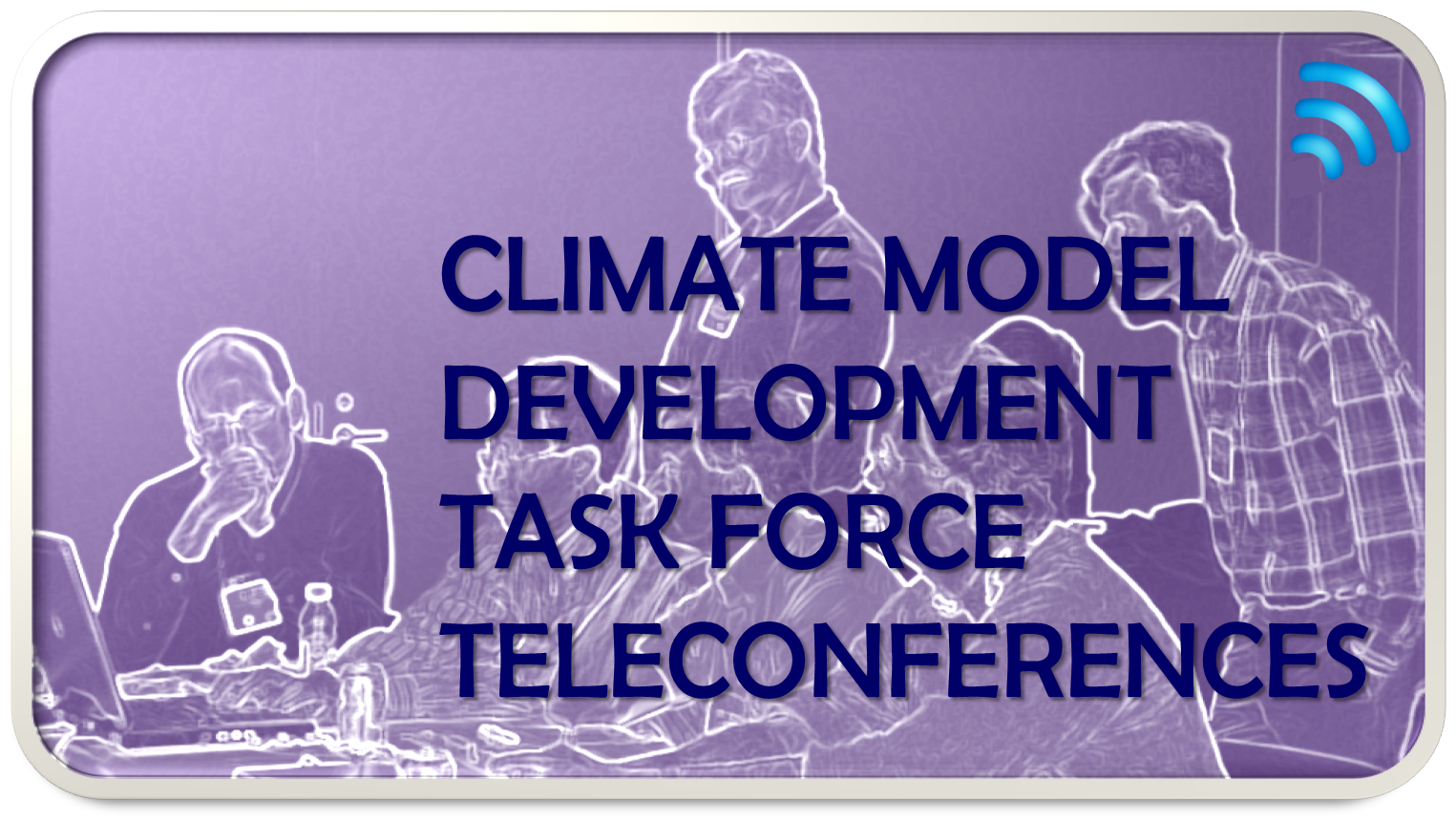NCEP CLIMATE FORECAST SYSTEM
|
To accelerate evaluation of and improvements to the operational Climate
Forecast System (CFS) and to enhance its use as a skillful tool in providing
NCEP’s climate predictions and applications
|
 2016
2016
|
April 19, 2016
The topic of the April CMDTF telecon was ocean biogeochemical (O-BGC) modeling. The invited talk by Dr. Charlie Stock gave a brief overview on NOAA GFDL’s biogeochemical and marine ecosystem modeling efforts for seasonal to decadal prediction and projection of the ecosystem. The
Carbon, Ocean Biogeochemistry and Lower Trophics (COBALT) planktonic ecosystem model developed in GFDL established a robust baseline, which quantitatively captured interactions between climate and ocean biogeochemistry with a more resolved, mechanistic representation of the plankton ecosystem dynamics, as well as between climate and the flow of carbon and energy through the planktonic food web to fisheries and other living marine resources. Progresses had been made in
ESM4 integration of COBALT with
MOM6 for
CMIP6 (and beyond), the prototype high-resolution ESMs, and
|
|
the regional Earth System downscaling across US. Promising initial results suggested
predictability of biogeochemical signals and
capturing of biogeochemical variability modes
underlay the predictability of the model. There
were needs to integrate biogeochemistry with data assimilative physics used in prediction systems, and to assess how the global biogeochemical observing system refined model-driven
initial condition estimates. Following up on the O-BGC topic, Dr. Sudhir Nadiga of NCEP/EMC presented a simple statistical (Neural Network) plugin for the missing of ocean biology component in CFSv3. His investigation using hybrid coupled models demonstrated that ocean biology-induced feedback modulated ENSO amplitude and period, and the ocean biology acted to counteract effects of interannual variability in freshwater fluxes on ENSO simulation. Neural Network technique, an easy and computationally cheap method,
was able to reproduce monthly chl-a that compared well with satellite observations over long periods in seasonal forecast models.
|
|
March 30, 2016
The March CMDTF telecon focused discussions on hierarchical modeling framework. Prof. Amy Clement of University of Miami gave an introduction on NCAR/Community Earth System Model (CESM) hierarchical modeling framework, a set of simple models for a university branch of CESM, to bridge the gap between simulation and understanding in climate modeling, and meanwhile promote collaborative contributions by national labs and universities. In discussions, the critical importance of interactive process with full operational model system was emphasized for success. Next, Prof. Yochanan Kushnir of Columbia University talked on WCRP plans for advancing decadal climate prediction and connections to seasonal prediction. A grand challenge was elaborated with R&D needs to address the objectives of (1) improving multi-year to decadal climate predictions by addressing existing issues with initialization,
model biases and model drift, (2) collecting, collating, and synthesizing the prediction output and tailoring climate information (including assessments of uncertainty) to form the basis of service that addresses stakeholders’ needs, (3) developing organizational and technical processes, including international coordination to underpin the future routine provision of scientifically-sound, prediction services.
|
|
February 23, 2016 Dr. Suru Saha of NCEP/EMC laid out a plan for coupled testing to explore the responses of various physics in different conditions, from diurnal to seasonal and for many locations, by developing a process oriented diagnostics package and making the single column models (SCM) "operational" for easier sharing/working with external community. Dr. Lígia Bernardet from
Global Modeling Testbed (GMTB) gave an overview on GMTB, which was leveraged from Developmental Testbed Center (DTC) as a critical mechanism for connecting NCEP to the research community. A Common Community Physics Package (CCPP), which would benefit CMDTF,
is developing. It can be used by all models, thus will
minimize needs to port new schemes to various
NCEP models. Its hierarchical testing framework
is expected to attract community contributions that will expedite forecast improvement. Discussions followed for cooperative development.
|
|
Archives
2015
2015
|
|
 2016
2016